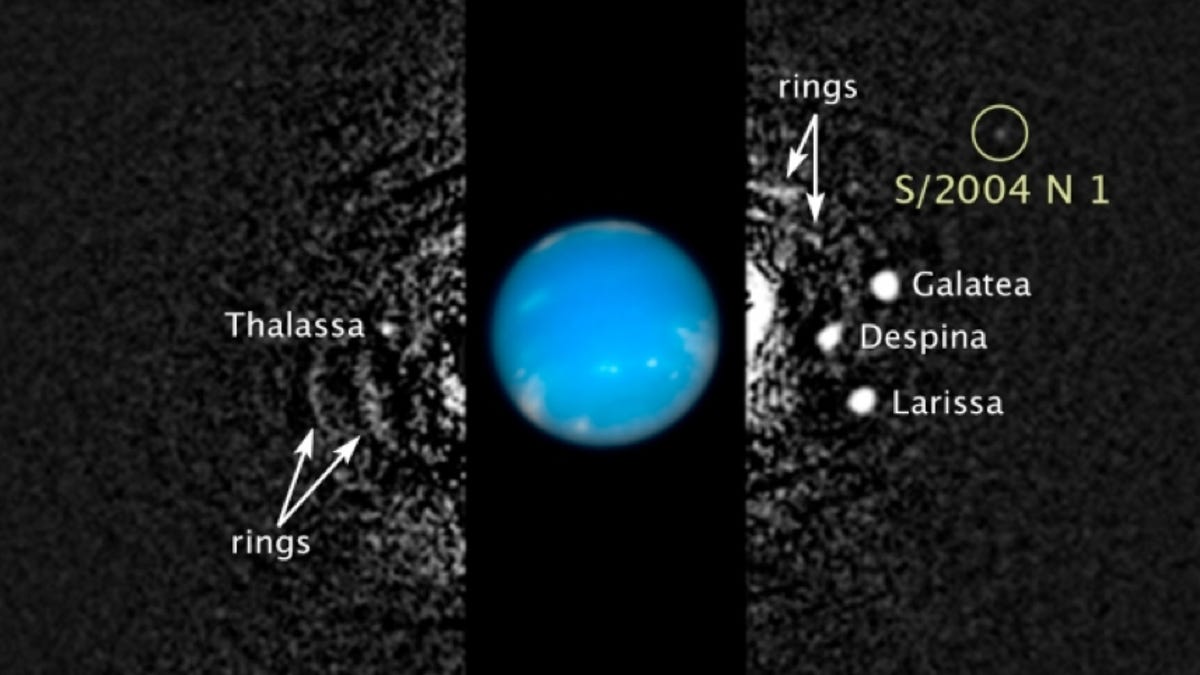Hubble finds new moon around Neptune that Voyager missed!
The new moon is about one hundred million times fainter than the faintest star that can be seen with the naked eye.

In 1989, the Voyager 2 spacecraft was carrying out a survey of Neptune's moons and rings but inexplicably zipped by the planet without registering what would turn out to be truly big news. That finding would have to wait until earlier this month when Mark Showalter, an astronomer at the SETI Institute, was working with images sent back by the Hubble Space Telescope, when he discovered the presence of the smallest moon in the Neptunian system.
The moon, designated S/2004 N 1, is estimated to be no more than 12 miles across. That helps explain why Voyager 2 failed to notice its presence. NASA said the moon was about one hundred million times fainter than the faintest star you can see with the naked eye.
Showalter was going through data sent back by Hubble on July 1, studying segments of rings around Neptune, when he made the discovery.
"The moons and arcs orbit very quickly, so we had to devise a way to follow their motion in order to bring out the details of the system," he said, in a release. "It's the same reason a sports photographer tracks a running athlete -- the athlete stays in focus, but the background blurs."
During the course of his investigation, Showalter found what appeared to be a dot about 65,400 miles from Neptune. That turned out to be the moon S/2004 N 1. The discovery, imaged by NASA's Hubble Space Telescope, marks the 14th moon known to be circling Neptune.

